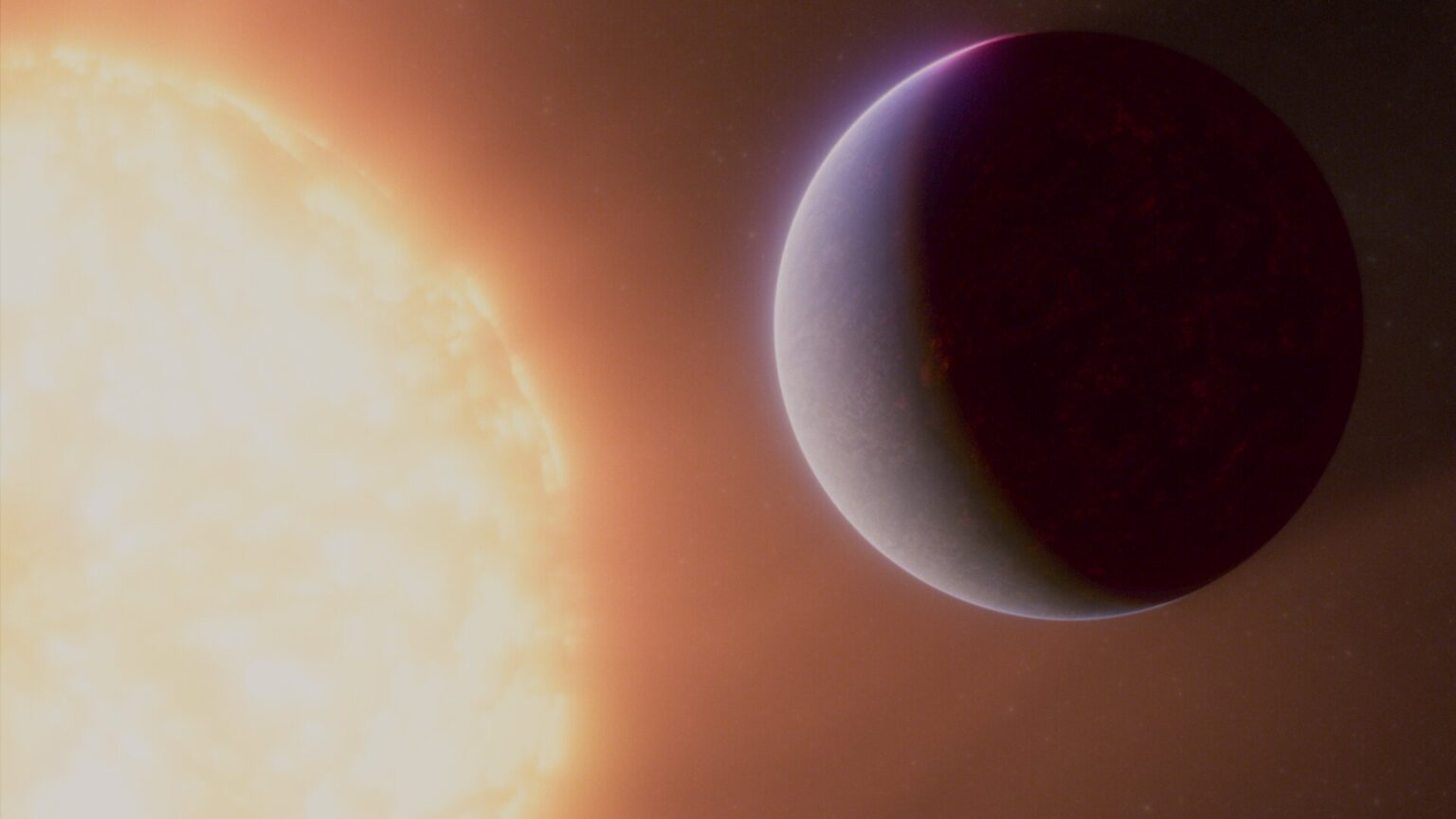Specialists working with the James Webb Space Telescope examined 55 Cancri e. This mysterious rocky planet became the first relatively Earth-like planet for which the existence of a gas shell was precisely established.

Mysterious 55 Cancri e
The James Webb Space Telescope has collected the best evidence to date that an Earth exoplanet may have an atmosphere. This was achieved thanks to observations of 55 Cancri e.
It orbits a star located 41 light-years from Earth. Besides it, there are four other worlds in the system. However, 55 Cancri e is considered the innermost and most mysterious among them, despite the fact that it has been repeatedly observed at different wavelengths.
Thanks to these studies, scientists knew that its diameter is twice as large as Earth’s, and its density is slightly greater. At the same time, the planet is very hot because it is close to its star. However, what it looks like and, especially, whether it has its own atmosphere, has not yet been known.
James Webb confirms the existence of atmosphere
At this stage, James Webb joined the research. The scientists who work with it already published a map of it in 2016 and even then suggested that it had an atmosphere. Now they have received a much larger data set thanks to the NIRCam (Near-Infrared Camera) and MIRI (Mid-Infrared Instrument).
The data obtained was compared with two models. The first one showed a world in which the gas shell consisted of evaporated silicate rocks. The second is a world in which volatile substances such as water and carbon dioxide are present in the gas envelope. And what the space telescope showed is most similar to the latter case.
Actually, as studies have shown, the atmosphere of 55 Cancri e consists of carbon dioxide. This is an amazing discovery considering how hot the planet is and how much its star is irradiating it. However, no less important for scientists is the fact that James Webb could determine the presence and composition of the gas shell under such conditions. If it was able to do this with 55 Cancri e, then it would be all the more possible for it to do so with colder worlds.
According to phys.org
Follow us on Twitter to get the most interesting space news in time
https://twitter.com/ust_magazine


